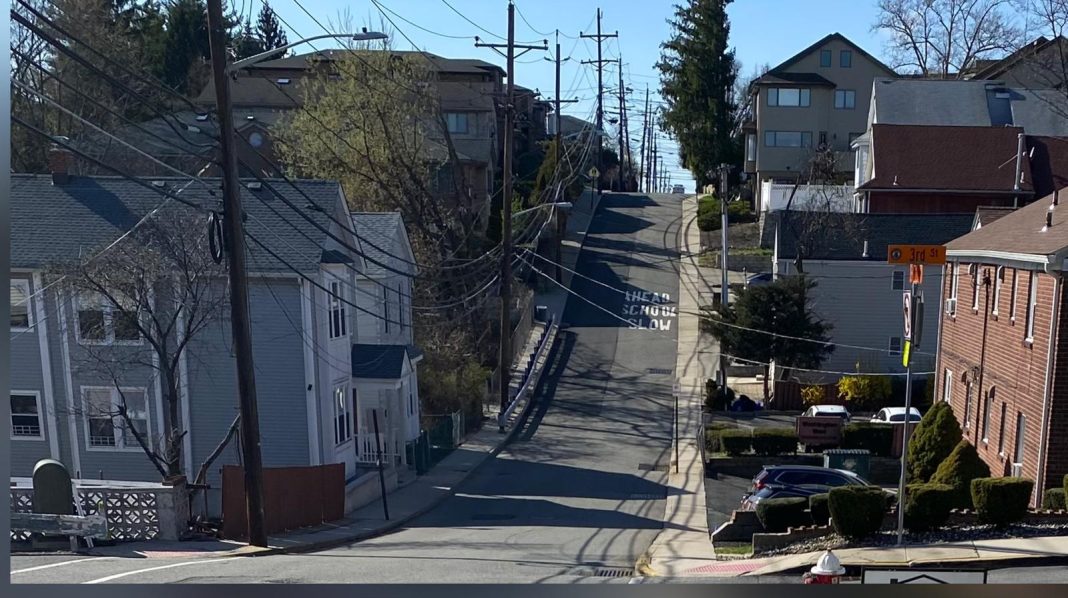A street that instantly teaches you never to forget the laws of physics and demonstrates them experimentally.
In Fort Lee, there is a street that looks completely ordinary. But if you walk it often, you’ll realize that this street is a perfect example of how physical laws play out in real life. It slopes downward, dips into a small valley, and then rises again, like a real roller coaster.
On this short stretch of road, you can practically observe many laws of physics in action: gravity, friction, the law of conservation of energy, action and reaction, Newton’s second law, impulse – and even experience inelastic collisions.
How do I know this? Because I’ve lived it.
What happened to me wasn’t just an accident – it was a life lesson, or more precisely, a personal experiment that, in a slightly painful way, showed me just how important it is to anticipate physical laws instead of realizing them only after they’ve acted — and feeling them directly on my own knee.
Paradoxically, these falls happened while I was going uphill, not downhill – even though one would expect gravity to cause trouble on the descent.
Experimental Section
First Fall: Friction, Circular Motion, and Conservation of Energy
One morning, I was walking uphill, carefree, and didn’t notice a thin layer of ice until I suddenly fell with my full weight — straight onto my back.It wasn’t rolling friction, it was sliding friction. That was the first thing that came to mind.
T he fall wasn’t linear either. My body followed a 90-degree arc and I ended up in a horizontal position on the ground. It was an unexpected moment of circular motion. I got up right away, as if nothing had happened, but what had just occurred aligned perfectly with the laws of physics. While I was standing upright, I had maximum potential energy. During the fall, that energy transformed into kinetic energy as I gained speed. At the moment of impact, kinetic energy was at its peak, and potential energy was nearly zero.
Since I got up quickly, potential energy rose again, while kinetic energy fell. In the end, potential energy returned to maximum and kinetic to zero. The law of conservation of energy had been fully demonstrated. There was no loss of mass during the fall, so no energy converted into other forms.
Second and Third Falls: Gravity, Impulse, and Inelastic Collision
The second time, I was going uphill again, but on the other side of the street. I hurried, maybe even ran — not thinking about gravity. And naturally, gravity didn’t forgive me.
I fell — not once, but twice. Both times I injured my knee. Why didn’t I learn from the first mistake? Probably because it happened several months earlier — and things get forgotten. This fall was a true mini-laboratory moment, where multiple mechanical laws came into play.
I accelerated, and according to Newton’s second law (F = m × a), force equals mass times acceleration. But gravity acted in the opposite direction, triggering the law of action and reaction. My action — running uphill — produced a reaction: falling backward. There was no inertia because my movement wasn’t uniform or linear. At the moment of impact, all the force was concentrated on one point — my knee. That made it a clear example of an inelastic collision.
A portion of the energy transferred into tissue deformation and turned into mild, yet real, pain.
Conclusion
Not every fall is a flight — but every fall should be a lesson.
Physics is all around us, and we should be careful not to let our mechanical energy turn into physical pain —
which sometimes happens even to those of us who are deeply in love with physics.
AzizA








